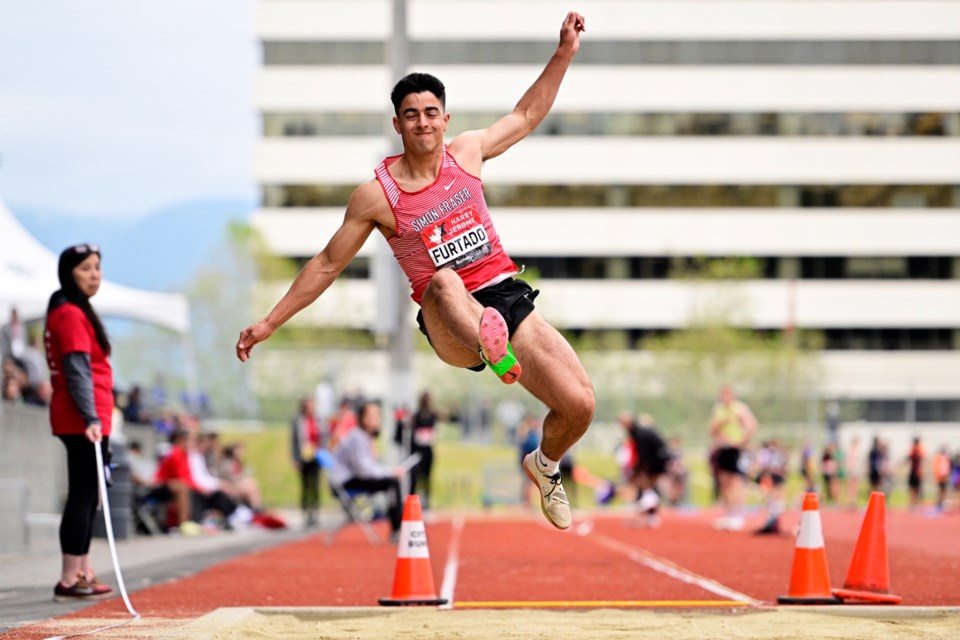Swangard Stadium is getting an upgrade – but will it be for the local Burnaby community or all of Metro Vancouver?
That’s the question posed by city staff in a report going to Burnaby’s parks commission July 11.
Swangard Stadium, which opened in 1969, is the only facility in Metro Vancouver that has more than 5,000 permanent seats alongside infrastructure for competition-level track and field and a natural grass infield.
But it’s also the only space in Burnaby big enough for events that need a large fenced-in outdoor area, meaning Swangard has become “the de facto site for many community events,” according to the staff report.
Because of this, the stadium is highly used in the spring and summer between April and August, when “demand often exceeds availability,” wrote Carmen Gonzalez, the city’s deputy general manager of parks, recreation and culture, in the report.
Outside of those months, stadium usage is low.
Swangard is nearing end of life and will “require significant upgrades to ensure its continued use and functionality.”
The city is considering six options: the first three include minor upgrades and improvements and the next three are full-scale redevelopment.
The report states the first set of choices would keep the stadium as a “primarily community asset,” while the “major investments considered in the second group of options would transform the facility into a regional asset.”
Minor upgrade options:
- Option 1A: Sport focus ($25.2 million)
- Option 1B: Culture focus ($28.5 million)
- Option 1C: Multipurpose ($29 million)
The first three options add about 500 to 1,000 new seats to the stadium, as well as additional administrative support building and an increased fence area of about 700 metres.
The sport-focused upgrade would see new track and field infrastructure, the sports field relevelled and a new structure for admin and support spaces for athletes.
The culture-focused upgrade would include replacing the natural grass turf with artificial or hybrid grass, add an event support area, and would “no longer support a full spectrum of track and field competition activities,” according to the consultant's report. The hybrid or synthetic field would allow for increased year-round field use.
The multipurpose option would see a mix of those options, but keep the natural grass.
Parking would remain a “significant challenge” in all three options.
Full redevelopment options:
- Option 2A: Sport focus ($153.2 million)
- Option 2B: Multipurpose ($167.2 million)
- Option 2C: Anchor tenant ($169.9 million)
The second group of options would all add two grandstands with about 5,000 seats apiece, as well as more spaces such as concessions, support rooms, community spaces and more underground parking.
Gonzalez noted creating a regional asset with full redevelopment would mean reducing the green space at Central Park.
“While the loss of space is relatively limited, Central Park plays an important role in providing open green space in a dense neighbourhood,” she wrote.
The sport-focused redevelopment would include new track and field infrastructure and the development of a gathering plaza to act as the main pedestrian entrance.
The multipurpose redevelopment would re-do the current natural grass field with hybrid or artificial grass and create a whole new natural grass field adjacent to the stadium.
The anchor tenant option would support a sports organization, keeping the natural grass surface to support soccer, football and rugby play.
The redevelopment options would cause significant disruption during construction and parking would remain a challenge in all options.
Competing interest in Swangard
Most of the bookings at Swangard are for sports activities – 42 per cent for track and field and 22 per cent for soccer. Cultural events and festivals make up 20 per cent of the usage.
Gonzalez wrote, “The facility currently functions a multi-purpose space for both recreation and culture users, however it is clear it cannot meet the demands of both of these needs during peak times.”
There will likely be an increasing need for stadium space regionally, as the governing body for track and field events is expected to increasingly inspect that competitions are held in certified facilities.
Swangard is one of “very few” certified facilities in the region, which will “likely increase the demand and pressure” on the stadium.
Gonzalez said if the city opts for the sports focus, it would need to invest an event space such as an outdoor plaza in Central Park to host the community events that would be displaced from Swangard.
Next steps include public engagement on the options and the city will incorporate the findings into the Official Community Plan update.
For more information on the options, you can read a consultant’s report here.
📢 SOUND OFF: Do you think Swangard should serve the Burnaby community specifically or the wider Metro Vancouver region as well? Which option do you like best for the future of the stadium? Share your thoughts — send us a letter.





